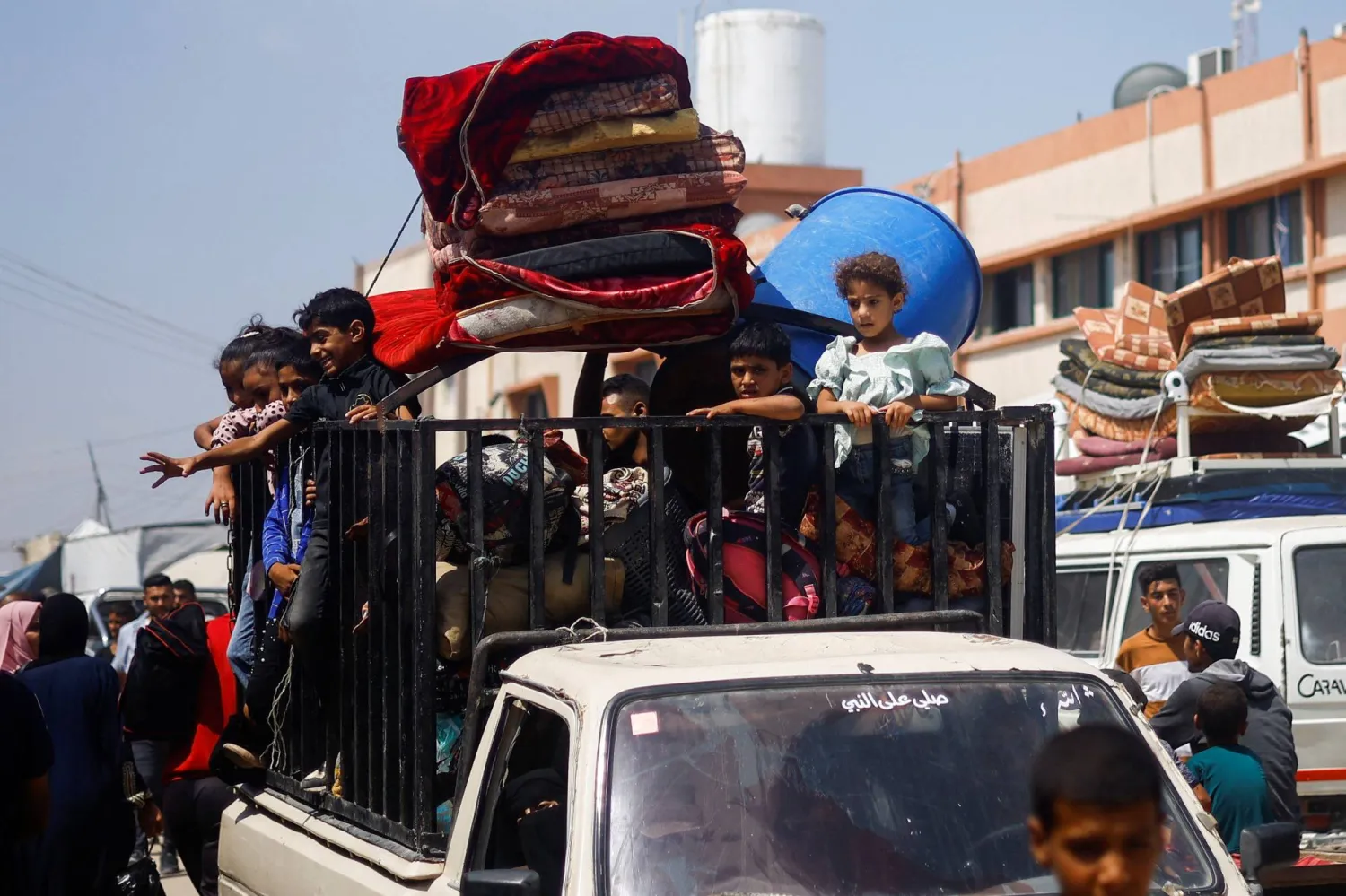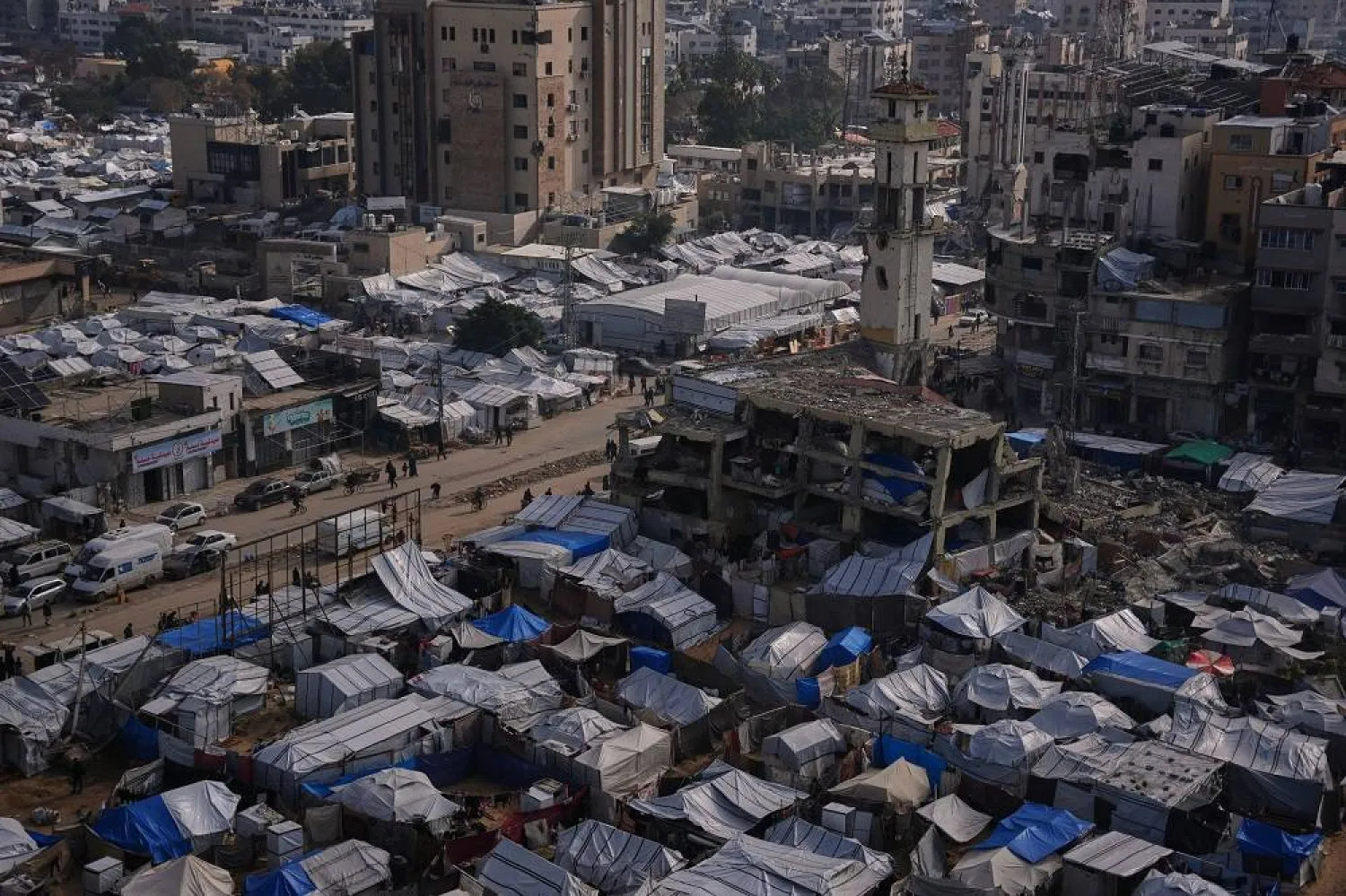The Hamdan family — around a dozen people from three generations — fled their home in the middle of the night after the Israeli military ordered an evacuation from the southern Gaza city of Khan Younis.
They found refuge with extended relatives in a building further north, inside an Israeli-declared safe zone. But hours after they arrived, an Israeli airstrike on Tuesday afternoon hit their building in the town of Deir al-Balah, killing nine members of the family and three others.
In all, five children and three women were among the dead, according to hospital records and a relative who survived.
Israel’s order on Monday for people to leave the eastern half of Khan Younis — the territory’s second-largest city — has triggered the third mass flight of Palestinians in as many months, throwing the population deeper into confusion, chaos and misery as they scramble once again to find safety.
About 250,000 people live in the area covered by the order, according to the United Nations. Many of them had just returned to their homes there after fleeing Israel’s invasion of Khan Younis earlier this year — or had just taken refuge there after escaping Israel's offensive in the city of Rafah, further south.
The order also prompted a frantic flight from European General Hospital, Gaza's second-largest hospital, located in the evacuation area. The facility shut down after staffers and more than 200 patients were evacuated overnight and on Tuesday, along with thousands of displaced who had sheltered on the hospital grounds, according to the staff and the International Committee of the Red Cross, which had a medical team there.
Hisham Mhanna, the ICRC spokesperson in Gaza, said some families dragged patients in their hospital beds through the streets for up to 10 kilometers (6 miles) to reach safety. Ambulances moved others elsewhere as staff rushed out valuable equipment, including X-ray and ultrasound machines and endoscopy devices now so scarce, said a nurse, Muhammad Younis.
Hours after ordering the evacuation, the Israeli military said the hospital was not included on that order. But the staff said they feared a repeat of previous Israeli raids on other Gaza hospitals.
“Many hospitals have come to rubble and have been turned into battlefields or graveyards,” Mhanna said.
Israel has raided hospitals, saying Hamas uses them for military purposes, a claim Gaza's medical officials deny.
On Tuesday, cars loaded with personal belongings streamed out of eastern Khan Younis, though the number of those fleeing was not immediately known. The new exodus comes on top of the 1 million people who fled Rafah since May, as well as tens of thousands who were displaced the past week from a new Israeli offensive in the Shijaiyah district of northern Gaza.
“We left everything behind,” said Munir Hamza, a father of three children who on Monday night fled his home in an eastern district of Khan Younis for the second time. “We are tired of moving and displacement. ... This is unbearable.”
Nowhere safe Up to 15 members of the Hamdan family fled their Khan Younis home and arrived late on Monday at their extended family’s building in Deir al-Balah, said Asmaa Salim, a relative who lived in the building.
The building was located inside the extended humanitarian zone that the Israeli military had declared when it began its offensive in Rafah in May, telling Palestinians to evacuate there for safety.
The strike came around 3 p.m. on Tuesday. Associated Press video shows an entire floor of the building gutted. “Almost everyone inside was martyred, only two or three survived,” Salim told the AP.
A list of the dead posted at the nearby Al-Aqsa Martyrs Hospital said those killed included the family patriarch, 62-year-old dermatologist Hossam Hamdan, as well as his wife and their adult son and daughter. Four of their grandchildren, aged 3 to 5, and the mother of two of the children were also killed. A man and his 5-year-old son who lived in the building and a man on the street outside were also killed in the strike, which wounded 10 other people, including several children.
The Israeli military did not immediately respond to requests for comment on the strike.
Flight from Khan Younis Monday’s evacuation order suggested a new ground assault into Khan Younis could be coming though there was no immediate sign of one. Israeli forces waged a months-long offensive there earlier this year, battling Hamas militants and leaving large swaths of the southern city destroyed or heavily damaged.
Israel has repeatedly moved back into parts of the Gaza Strip it previously invaded to root out militants it said had regrouped — a sign of Hamas’ continued capabilities even after nearly nine-months of war in Gaza.
Israel’s campaign has killed more than 37,900 Palestinians, the majority women and children, according to Gaza’s Health Ministry, which doesn’t distinguish combatants among its count. Israel launched its campaign after Hamas’ Oct. 7 attack in which militants killed some 1,200 people in southern Israel and took around 250 others hostage.
The Israeli military said Tuesday it estimates that some 1.8 million Palestinians are now in the humanitarian zone it declared, covering a stretch of about 14 kilometers (8.6 miles) along Gaza's Mediterranean coast. Much of that area is now blanketed with tent camps that lack sanitation and medical facilities with limited access to aid, UN and humanitarian groups say. Families live amid mountains of trash and streams of water contaminated by sewage.
The amount of food and other supplies getting into Gaza has plunged since the Rafah offensive began. The UN says fighting, Israeli military restrictions and general chaos — including looting of trucks by criminal gangs in Gaza — make it near impossible for it to pick up truckloads of goods that Israel has let in. As a result, cargo is stacked up uncollected just inside Gaza at the main Kerem Shalom crossing with Israel, near Rafah.
The Norwegian Refugee Council said last week that it surveyed nearly 1,100 families who fled Rafah and 83% of them reported having no access to food and more than half had no access to safe water.
On Tuesday, more families fleeing Khan Younis were trying to find space in the zone. Um Abdel-Rahman said she and her family of four children — the youngest 3 years old — walked for hours during the night to reach the zone only to find no place to stay.
“There is no room for anyone,” she said. “We are waiting and have nothing to do but wait.”
Noha al-Bana said she has been displaced four times since fleeing Gaza City in the north early in the war.
“We have been humiliated,” she said. “No proper food, no proper water, no proper bathrooms, no proper place for sleep. … Fear, fear, fear. There is no safety. No safety at home, no safety in the tents.”









